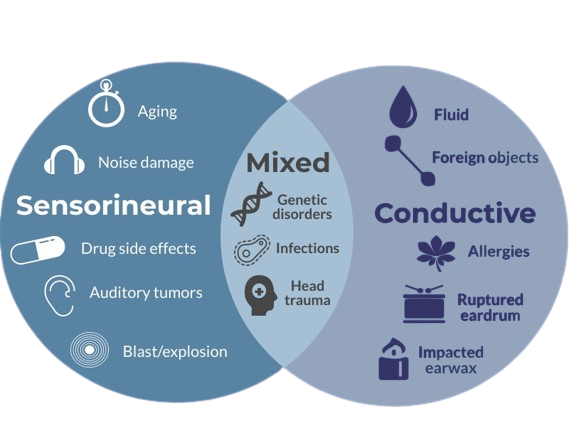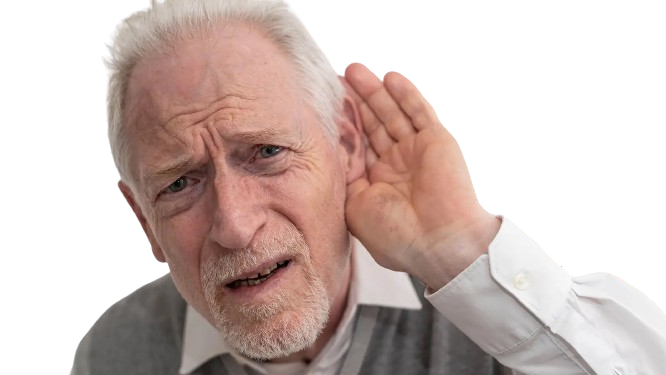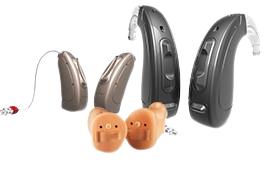- The Pure Tone Test:
The hearing health care professional will examine your hearing ability by letting you listen to a number of different pure tones through a pair of headphones.
Speech Test involves you in making you to repeat certain words spoken in different volumes. This is also similar to the pure tone test but Both the ears will be tested individually. When you hear a tone, you have to press a button. The test results - illustrated as a graph or an audiogram - show your hearing threshold, i.e. the softest sounds you are able to hear at different frequencies (Hz).
Bone conduction test is also carried out to measure your ability to hear pure tones, by placing a small bone conductor behind your ear. In this test the bone conductor sends tiny vibrations to the inner ear instead of audible sounds. The results of these vibrations give another indication of your hearing threshold and are also shown as an audiogram.
These two tests provide a better indication of which particular parts of the ear are responsible for the hearing loss.
- The Speech Test:
Your ability to recognize the speech can be measured with this test.
Speech Test involves you in making you to repeat certain words spoken in different volumes. This is also similar to the pure tone test but the difference is without tones.
This test result will helps to understand how well you hear and understand ordinary conversation. The result of the test is also an audiogram to determine your speech reception threshold.
- The Middle Ear Test:
The reaction of the ear drum to varying air pressure in the ear canal is tested by this middle ear test.
While listening to different sounds the air pressure inside your ear is increased or decreased and it’s sensed by placing a small probe into the ear.
As the degree of your ear drum sensitivity of the ear drum determines your hearing ability; this test, in conjunction with the pure tone test and the speech test, helps the examiner to determine the extent of your hearing loss.
- Audiogram:
The audiogram graphically describes your hearing ability and which can be described as a picture of your sense of hearing and it’s the outcome of different tests conducted by the hearing health care professional after a number of tests. It infers you whether you have a hearing loss or not.
The red and blue band in the audiogram shows the right and left ear hearing thresholds and the results may also differs.
The audiogram pasteurizes your hearing ability by showing your hearing threshold at various frequencies. Hearing threshold is an indication of how soft a sound may get before it is inaudible. A hearing threshold of between 0 and 25 dB is considered normal.
The vertical axis of the audiogram represents sound volume or intensity which is measured in decibels (dB). The more one moves down the axis, the louder the sound becomes. This corresponds to turning up the volume on a radio. Zero decibel at the top of the axis represents the softest sound a person is normally able to hear, and is not an indication that you cannot hear any sounds at all.
The horizontal axis of the audiogram represents sound frequency or pitch measured in Hertz (Hz). Sound frequency increases gradually the further one moves to the right along the axis. This movement can be compared to playing on the left side of a piano and gradually moving to the right side where the tone becomes more and more high-pitched. Frequencies between 500 Hz and 3000 Hz are most commonly used during ordinary conversation.
In General, the more markings below 25 dB or more, at frequencies which are normally used in conversation, the more difficult it is to hear what is being said. And in situations with a lot of background noise it will often be even more difficult to hear properly.
Based on your information related to your personal feedback and the with the result of the above mentioned test the hearing health professionals can determine the course of action.











